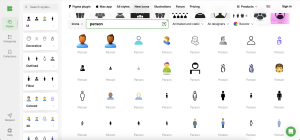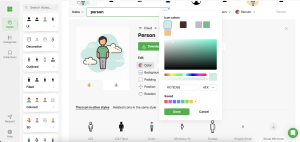Person icons serve as vital tools in establishing a recognizable visual identity for brands on the web. By integrating these icons thoughtfully, designers can significantly enhance user experience and maintain coherence across various digital touchpoints. This not only makes interfaces friendlier but also strengthens brand presence.
Understanding Person Icons
Person icons are graphical representations used to signify users, teams, or social interactions within a digital interface. They range from simple, stylized figures to detailed portraits, catering to different aesthetic and functional requirements. The choice of style can influence user perception and interaction quality, making it crucial to select icons that align with the overall design ethos.

Design Principles for Person Icons
- Consistency: Maintain alignment with the brand’s visual and stylistic guidelines. Icons should complement the brand’s color palette and typography to reinforce identity.
- Clarity and Simplicity: Design icons to be easily recognizable at a glance, avoiding complex details that may confuse users.
- Scalability: Ensure icons retain clarity and effectiveness when resized for different devices. Prioritize clean lines and simple designs for better scalability.

Technical Considerations
- File Formats: Choose SVG for scalable, web-friendly icons and PNG for more complex or colorful images, ensuring optimal performance across all platforms.
- Accessibility: Prioritize design features that make icons usable by all users, including sufficient color contrast and alternative text for those using screen readers.
- Responsive Design: Develop icons that adapt well to various screen sizes and orientations, possibly by creating multiple versions or employing responsive design techniques.
Psychological Impact
Person icons can significantly affect user behavior and perception. They can add a human touch to digital interactions and foster a sense of connection and trust. Designers must be mindful of cultural symbols and norms to avoid misinterpretation and ensure inclusivity.
Case Studies
Studying how successful brands utilize person icons can provide valuable insights. Look at companies that have effectively used icons to enhance user interfaces and see what lessons can be learned about their design strategies and the impacts on their brand identity.
Tools and Resources
For those looking to design custom icons, Icons8 provides an extensive library of ready-to-use person icons that can be customized to fit any project’s needs. Tools like Adobe Illustrator can also assist in creating scalable vector graphics from scratch.
Conclusion
Person icons do more than fill space; they communicate key information and facilitate user interactions. By adhering to the principles outlined, designers can create effective and appealing icons that enhance both the aesthetics and functionality of a website.
